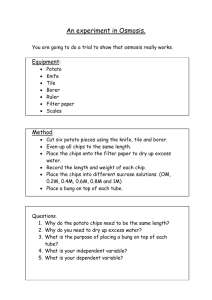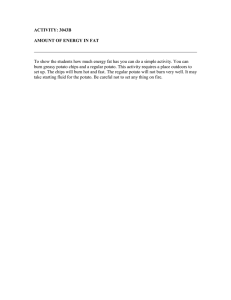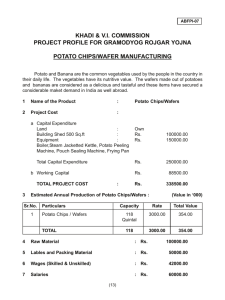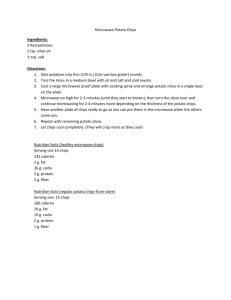Investigating osmosis
advertisement
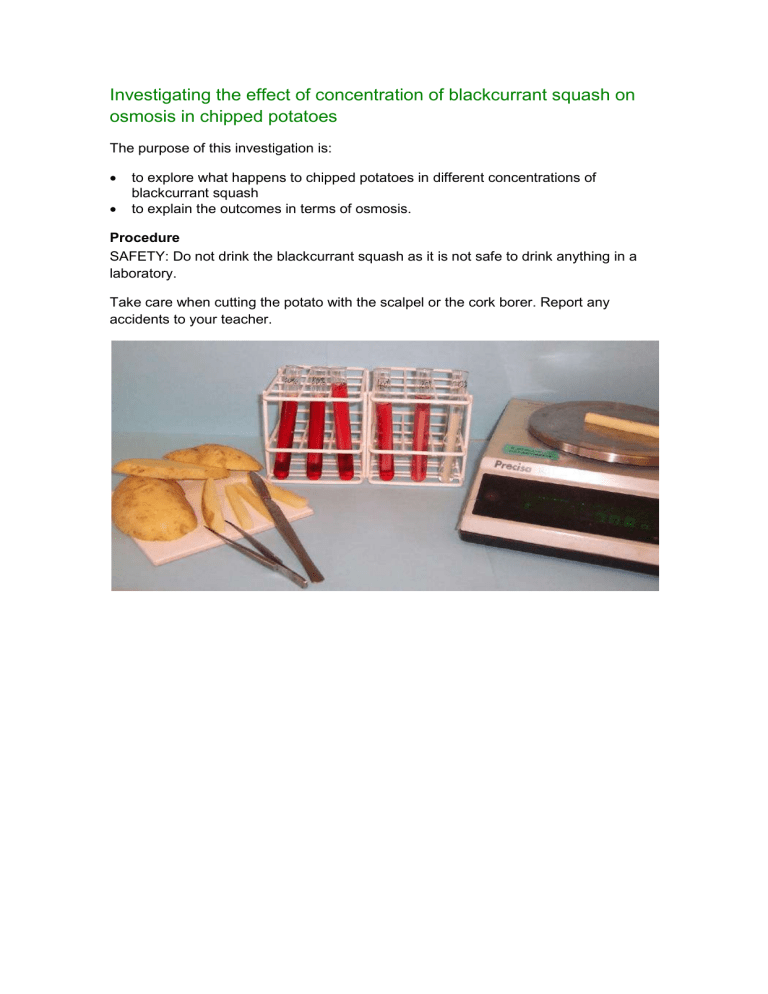
Investigating the effect of concentration of blackcurrant squash on osmosis in chipped potatoes The purpose of this investigation is: to explore what happens to chipped potatoes in different concentrations of blackcurrant squash to explain the outcomes in terms of osmosis. Procedure SAFETY: Do not drink the blackcurrant squash as it is not safe to drink anything in a laboratory. Take care when cutting the potato with the scalpel or the cork borer. Report any accidents to your teacher. Concentration of blackcurrant squash solution (%) Volume of blackcurrant squash needed (cm3) to make 10 cm3 of solution Volume of water needed (cm3) to make 10 cm3 of solution Volume of blackcurrant squash needed to make 30 cm3 of solution (B) (= A x 3) Volume of water needed to make 30 cm3 of solution Final volume of solution made (cm3) (= B x 3) (A) 0 0 10 0 30 30 20 2 8 6 24 30 40 4 6 12 18 30 60 6 4 18 12 30 80 8 2 24 6 30 100 10 0 30 0 30 Preparation a b c Label beakers/ boiling tubes with the concentrations of blackcurrant squash you will use. Measure out blackcurrant squash for the dilutions using the volumes shown in column 4 of the table. Measure out water using the volumes shown in column 5. (Columns 2 and 3 show the volumes needed to make 10 cm3 of solution, which is multiplied to get larger volumes in columns 4 and 5.) Collect some potato chips or a potato to cut up. Cut or trim your chips, if necessary to fit into your small beaker/ boiling tube. Cut off any potato skin. Investigation d e f g h i j k l Dry the chips on a paper towel. Weigh the chips using a balance and record masses in an appropriately designed table. Place chips in a beaker/ boiling tube. The solutions should completely cover the chips. Leave for at least 15 minutes. Remove chips one at a time from the beakers/ boiling tubes. Dry the chips on paper towel. Reweigh chips and record results in the table. Calculate the change in mass and then the percentage change in mass of each set of potato chips. Plot percentage change in mass (y-axis) against concentration of blackcurrant squash (x-axis). QUESTIONS 1 Why is it a good idea to remove all the potato skin? 2 Why do we dry the chips on a paper towel before weighing them? 3 Does your graph show any anomalies or inconsistencies? 4 Explain in biological terms what is happening to the potato chips in the different blackcurrant squash solutions. 5 What do you think is the approximate concentration of the cell contents of the potatoes? 6 You could modify this investigation to find out how quickly osmosis happens. Write down a hypothesis you would be testing and a plan for how to do the experiment. Include the variables you would need to control to get reliable results. ANSWERS 1 It is a good idea to remove all the potato skin in case the movement of solution through skin is at a different rate than through freshly cut tissue. 2 We dry the chips on a paper towel before weighing them so that we are sure that we are measuring change in mass of the potato chips. 3 The graph may show anomalies or inconsistencies – explained by differences in individual procedures, or some other factors. 4 In dilute solutions, the potato chips are drawing water in by osmosis as their cell contents are more concentrated than the outside solution. In concentrated solutions, the potato chips lose water by osmosis as their cell contents are less concentrated than the outside solution. At one concentration the cell contents are in equilibrium with the outside and so there will be no change in the mass of the potato chips. 5 The approximate concentration of the cell contents of the potatoes is the same as the solution with no change in mass. 6 Depends on student answers. A good response will describe a reliable method with a number of variables controlled.
